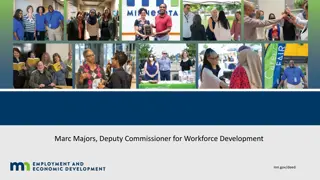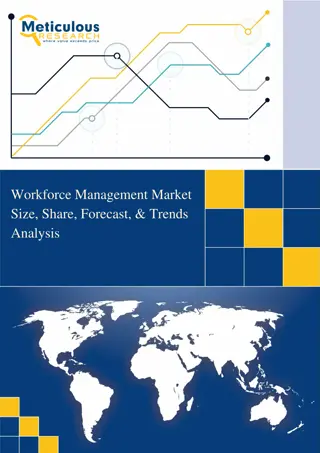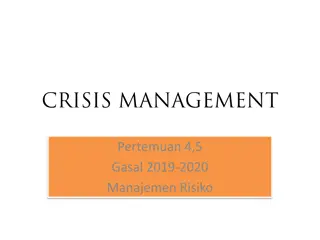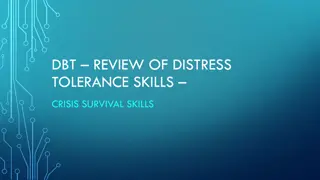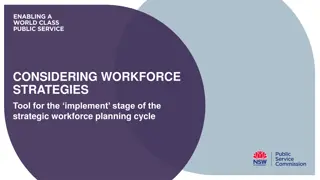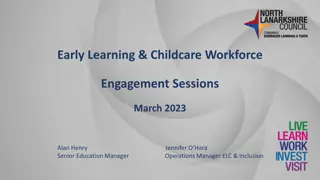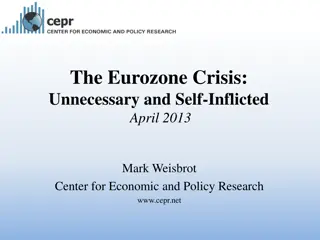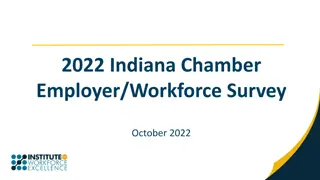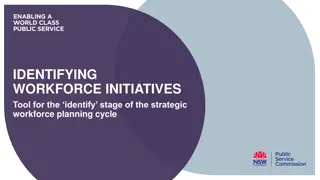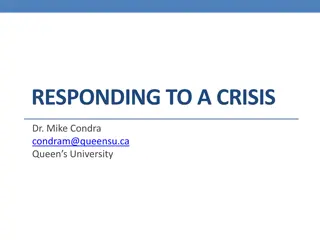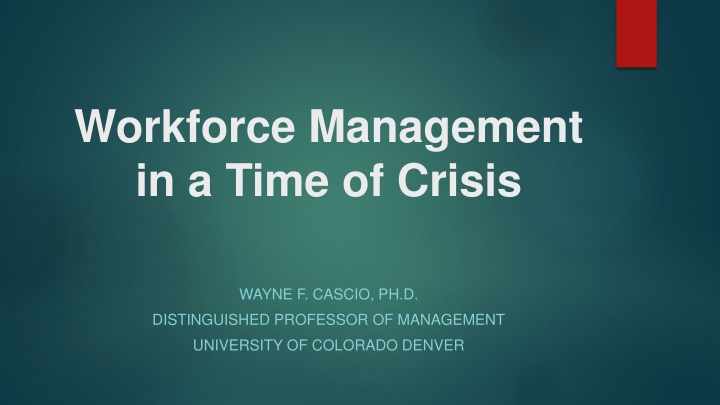
Efficient Workforce Management Strategies in Times of Crisis
Learn effective tactics for managing your workforce during uncertain times, including developing a solid plan, maintaining employee communication, and promoting self-awareness among leaders. Find out how to navigate challenges, support remote work, and foster a culture of resilience.
Download Presentation

Please find below an Image/Link to download the presentation.
The content on the website is provided AS IS for your information and personal use only. It may not be sold, licensed, or shared on other websites without obtaining consent from the author. If you encounter any issues during the download, it is possible that the publisher has removed the file from their server.
You are allowed to download the files provided on this website for personal or commercial use, subject to the condition that they are used lawfully. All files are the property of their respective owners.
The content on the website is provided AS IS for your information and personal use only. It may not be sold, licensed, or shared on other websites without obtaining consent from the author.
E N D
Presentation Transcript
Workforce Management in a Time of Crisis WAYNE F. CASCIO, PH.D. DISTINGUISHED PROFESSOR OF MANAGEMENT UNIVERSITY OF COLORADO DENVER
The Biggest Challenge: Uncertainty Employees want answers to the me questions: How long will this last? What about my job? Will I continue to get paid? Will my benefits continue?
Overall Strategy Have a plan Give people hope
Developing a Plan Business continuity is key: What problems/issues are central to your business strategy? What must you continue to execute well through the crisis? What kind of culture do you need to make the business strategy work? What to do: Involve employees in building a supportive culture Identify deliverables for each department and employee Establish timelines and quality standards for delivery Provide resources to help employees adjust to changes
Employee Communications This is the linchpin of your entire plan HR should have access to all employee contact information Managers should have contact information for each of their direct reports Use multiple channels email, Zoom meetings, Slack messages, phone Tell employees what actions you are taking and what they need to do Recognize employees for particularly effective actions Coach, counsel, or discipline poor performers
Tips on Working Remotely Establish a regular schedule e.g., core hours schedule and take breaks Consider daily teleconference / video calls to hear / see one another and to check in Ask employees: Does your workspace set you up for success? Identify your optimum working style and your best hours Take time for self-care commit to a fitness routine; eat healthy, nutritious meals Know when to log off you don t have to be available 24/7
Model Self-Awareness and Self- Control The longer a crisis continues, the harder it becomes for leaders to stay calm and confident but they need to do that or at least project it Senior management team(s) should meet daily ( virtually during the pandemic) to discuss key issues facing the business Regular communication with employees not only informs them but it also eases their anxieties
Key Responsibilities of HR Professionals Sensitize managers to the types of issues employees are facing Advise them on how to deal with these issues Schedule debriefing sessions to identify and follow-up on issues Refer employees to an Employee Assistance Plan (EAP), if necessary Keep senior HR leaders informed of issues as they arise
Make Life A Little Easier The coronavirus pandemic is, perhaps, the most radical and swift change in business in our lifetimes Provide the kind of support that offers peace of mind, for example, Virtual happy hours , virtual talent shows , or video chats where employees can talk about anything. Humor is welcome! Make time to keep things light
Returning to Regular Work Things will not return to normal because your life and others lives have been permanently altered Be visible and compassionate Increase face time with with employees; let them see and hear you Explain how your organization will be even more successful going forward Encourage employees to talk and tell their stories Involve employees in co-creating the future strategy and culture that will work best for your organization

